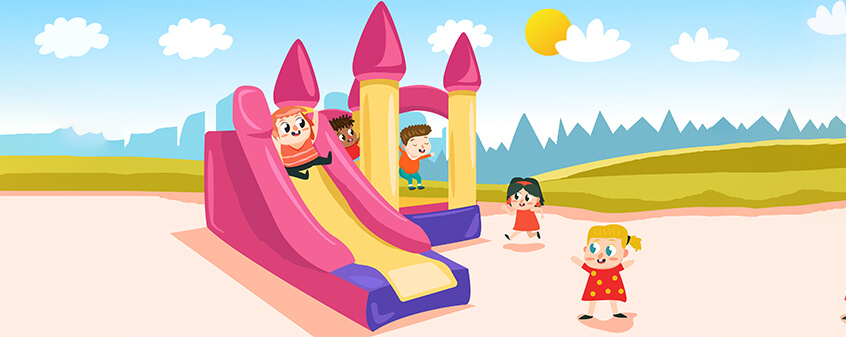“Understanding the Educational Boards in The Indian Education System”
Education is one of the prime crucial aspects towards human development. It is vital in shaping human life. Education is normally given since childhood to adulthood and the form may vary from society to country. Childhood is a critical stage in human development; so education provided during this period needs to be specific. Educational boards play an important role in the quality of education; we as a parent wish to provide to our child. Choosing which education board your child studies under, can feel like the biggest educational decision you’ll make. But as parents, a lot of what we know about these boards is half-fact and half-hoax, or threadbare memories of our own schooldays. Therefore, it becomes essential for the parents to have a fair understanding of Educational Boards prevalent today in our country. Education in India falls under the control of “The National Council of Educational Research and Training”. It is an apex organization set up by the government of India to assist and advice central and state governments on matters related to quality education. It provides support and technical assistance to most of the schools in the country. NCERT is also responsible for drafting and publishing of school textbooks. It works in direct association and corroborates the functioning of major curriculum bodies of our education system.
The Indian education system has five major boards: Central Board of Secondary Education (CBSE), Council for the Indian School Certificate Examinations (ICSE), Respective State Boards, International Baccalaureate Organization (IB), and Cambridge International Examinations (CIE).
The CBSE Board
The Central Board of Secondary Education is the largest national board, with more than 17,500 affiliated schools in India and more than 200 affiliated schools abroad. This board is a government body under the Union Ministry of Human Resource Development. Within CBSE, the National Council of Education Research and Training (NCERT), headed by the HRD Minister, guides the curriculum development.
The ICSE Board
More formally known as, the CISCE or Council for the Indian School Certificate Examinations, the ICSE is a private board that originated after Independence as a homegrown alternative to the colonial educational system. The ICSE board has more than 2300 schools in India.
The IB Board
The not-for-profit International Baccalaureate Organization is headquartered in Geneva. In India, 129 schools offer one or more of its four programs. Many IB schools are not standalone entities, but exist within the facilities of a national-board school. Globally, the board has about 4,500 schools in total.
The CIE Board
Cambridge International Examinations is the world’s largest provider of international education programs for 5- to 19-year-olds, and is governed by Cambridge Assessment, a department of the University of Cambridge in the UK. The non-profit organization is about 350 schools strong in India (like the IB board, many CIE schools in India exist within the facilities of a national-board school), with 10,000 schools worldwide.
The selection of school offering various boards is the biggest dilemma of a parent as all of us wish to give the best to our child. There is a dire need of thorough understanding that all educational boards have their pros and cons and one should choose an appropriate board depending on one’s own needs and circumstances. I have tried to assimilate the characteristics and pros and cons of some common boards to resolve the befuddlement.
CBSE (Central Board of Secondary Education)
A board which follows universal pattern is the first choice for parents with transferable jobs. CBSE affiliates all Kendriya Vidyalayas, all Jawahar Navodaya Vidyalayas, private schools, and most of the schools approved by central government of India
Examination Pattern: Uniform system of assessment, examination and issue of report cards for classes VI-VIII on the board exams pattern to elicit confidence in pupil from beginning wherein, students face two term exams; 20 marks each and half yearly and final exam:80 marks each. Marks are also awarded for project and notebook submission to the student for accumulated session. All India Senior School Certificate Examination (AISSCE) for Class X and XII respectively.
Facts:
- Total Number of Schools Affiliated with CBSE: 14808
- Areas of Operation: 25 Countries including India, Malaysia, Dubai etc
- Major entrance exams syllabus is based on CBSE viz. JEE, NEET, GATE, etc.
Pros:
1) The diversity factor in schools with CBSE board is high as more students from different backgrounds are likely to end up in the same class.
2) Quality of content in textbooks is standardized.
3) The examination pattern emphasizes to prepare students to handle the stress and competition of major entrance examinations.
4) It is easy to find tutors, books and corroborating material for all classes and all subjects.
5) The focus is on Science and Mathematics as well as application based subjects.
6) It is recognized by all colleges in India.
7) There is a centralized system for transfer across all CBSE schools.
8) Numerous talent search examinations and scholarship exams such as SSTSE, NSEB, and NSEC etc. are held at local and national level base and their content is designed on CBSE syllabus as it is more prevalent.
Cons:
1) Although, the syllabus of major entrance exams is based on CBSE, the fact still remains that the seats for those courses are open for all students in India; and the colleges which are coming under state universities have more reserved seats for students from state boards. So, students from CBSE board who wouldn’t crack entrance exams may face problems in getting admission in state university colleges as they have very less number of seats for CBSE Board quota.
2) Fees may be on the opulent side for some schools.
3) There aren’t enough options to explore in the field of Arts and Literature.
CISCE (Council for the Indian School Certificate Examinations)
Examination Pattern: This body conducts 3 examinations, namely:
• ICSE (Indian Certificate Secondary Education) exam for class 10.
• ISC (Indian School Certificate) exam for class 12.
• CVE (Certificate for Vocational Education) exam for class 12.
Facts:
• Total Number of Schools Affiliated with CISCE: Approx. 1000.
• Areas of Operation: India, UAE, Singapore, Indonesia
• Subjects Offered ICSE in 2013-64 with 23 Indian languages and 12 are foreign languages.
• Subjects Offered ISC in 2013- 50 with 23 Indian languages and 12 are foreign languages.
Pros:
1. Course curriculum is wide, covering a range of topics to explore overall growth of students.
2. CISCE prefers to give more practical knowledge and focuses more on analytical skills than mere bookish knowledge.
3. The subject selection options available to students are to follow their liking for a particular subject and not pre-decided combinations.
4. The CISCE board has equal focus on languages, science and humanities and encourages students to choose across diverse topics and subjects for their Class-12 exam.
Cons:
1. Some students may find the syllabus a bit cumbersome.
2. Students may find it hard to shift to other boards or Pre-Science Colleges; especially grade XI and XII.
3. The fee scale is extravagant.
4. Although, the syllabus of major entrance examinations is based on CISCE, the fact still stands that the seats for those courses are open for all students in India; and the colleges which are coming under state universities have more reserved seats for students from state boards. So, students from CISCE board who wouldn’t crack entrance exams may face problems in getting admission in state university colleges as they have very less number of seats for CISCE Board.
IB (International Baccalaureate)
Formerly known as the International Baccalaureate Organization (IBO), is an international educational foundation headquartered in Geneva, Switzerland and was founded in 1968.
Examination Pattern: It offers 3 educational programs, namely
• PYP or Primary Year Program for KG to Class-V.
• MYP or Middle Year Program for Class-VI to Class-X.
• DP or Diploma Program for Class-XI and Class-XII.
Facts:
• Number of Schools: Approx. 3500 worldwide & 130 in India.
• Areas of Operations: 144 Countries including India, USA, UK, Australia etc.
Pros:
1. International Board IS recognized by most of the Universities of the world.
2. Students can apply to Foreign Universities, without SAT scores wherein CBSE and ICSE board is not recognized.
3. Recognized by UNESCO, Council of Europe, Organization International de la Francophone (OIF)
4. The curriculum is based on application and experimentation.
5. Better infrastructure of schools in comparison to other boards.
6. It is the best option if parents are NRI, are planning to move abroad, or if the child wishes to study in foreign universities.
Cons:
1. Fee is on the higher side but is in line with the infrastructure and amenities offered by the school.
2. Found only in metropolitan cities and Tier-1 cities of India.
3. Difficult for students to shift boards; if the need arises at any point of time in life.
4. Tuitions, books and reference material is not easily available.
IGCSE (International General Certificate of Secondary Education)
It is an academically rigorous, internationally used, specialized, English language curriculum which is offered to the students to prepare them for International Baccalaureate and CIE A-level.
Examination Pattern:
• Cambridge Primary, typically for learners aged 5 to 11 years.
• Cambridge Secondary 1.
• Cambridge Secondary 2 is typically for learners aged 14 to 16 years. It offers learners two routes: Cambridge IGCSE and Cambridge O Level.
• Cambridge Advanced is typically for learners aged 16 to 19 years who need advanced study to prepare for university and higher education. It offers learners two routes: Cambridge International AS and A Level, and Cambridge Pre-U.
Facts:
• Number of Schools: Approx. 200 in India.
• Areas of Operations: 120 Countries including India, USA, UK.
Pros:
1. International Board is recognized by most of the Universities of the world.
2. Students can apply to Foreign Universities wherein CBSE and ICSE board is not recognized and they may even be exempted from entrance tests.
3. The curriculum is more advanced and the student has a variety of subjects to choose from.
4. There is more emphasis on English and Technical Subjects.
5. Good option if parents are NRI, are planning to move abroad or if the child wishes to apply to foreign universities.
Cons:
1. Fees is on the higher side.
2. Found only in metropolitan cities and Tier-1 cities of India
3. It may be difficult for students to shift boards if the need arises at any point of time in life.
4. Tuitions, books and supporting material is not easily available.
State Board
Every State Government imparts Primary, Secondary and Higher Secondary Education in its respective state.
Examination Pattern:
• SSC: Secondary School Certificate, 10 Board Exams.
• HSC: Higher School Certificate, 12 Board Exams.
Facts:
• Areas of Operations: Every State and Union Territory of India
Pros:
1. Favorable for parents without transferable jobs.
2. Easily available textbooks, teachers and reference material.
3. Moderately loaded curriculum giving options for Students to explore more extra-curricular activities like dancing, sports, painting, etc.
4. Moderate Fees.
5. More reserved seats within the state recognized colleges.
Cons:
1. Depends holistically on the State government’s competence to maintain quality of education.
2. Quality of teaching varies according to school and state.
3. Might lack in basic facilities.
4. Quality of Content in textbooks may be questionable at times.
I hope that the above explanations have been able to reduce the dilemma of choosing an appropriate educational board for your child to an extent and you have found more clarity regarding which board is best suited for your children.








